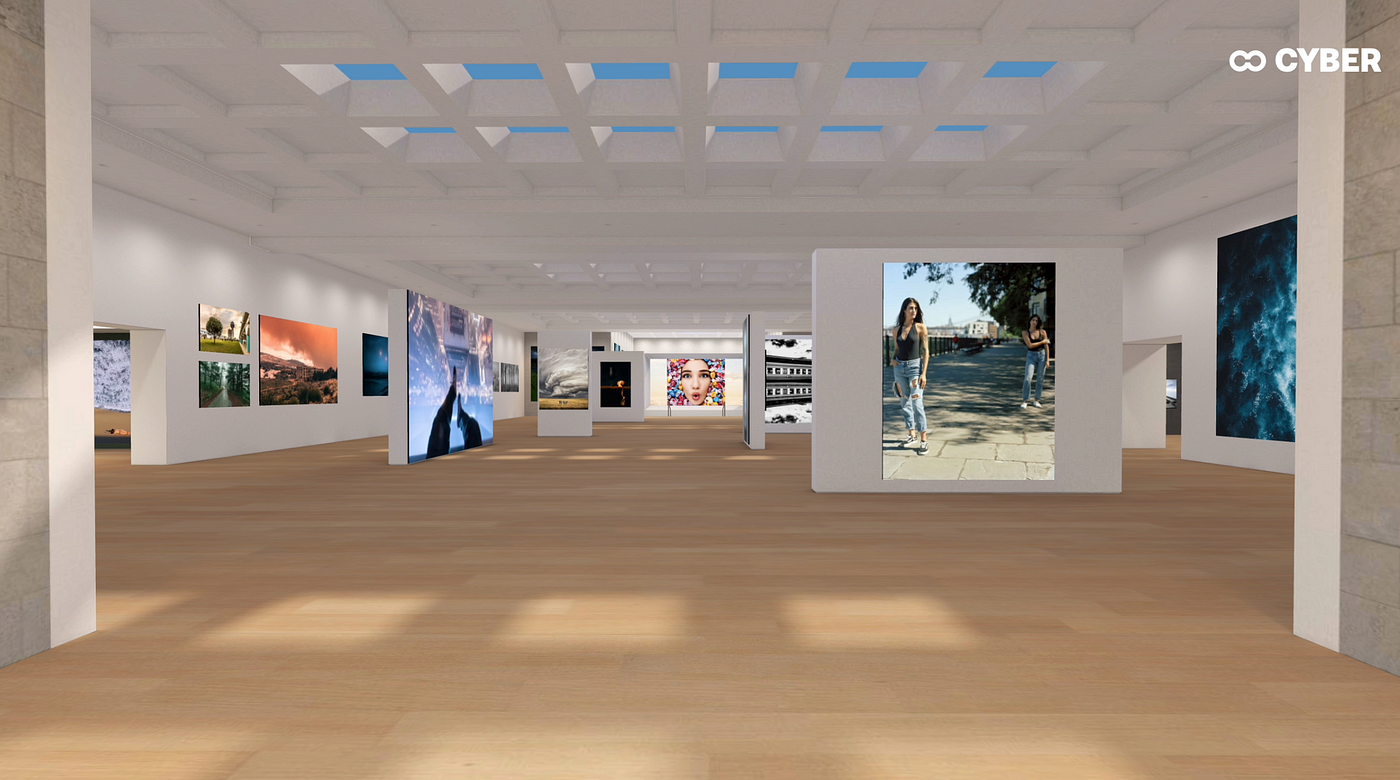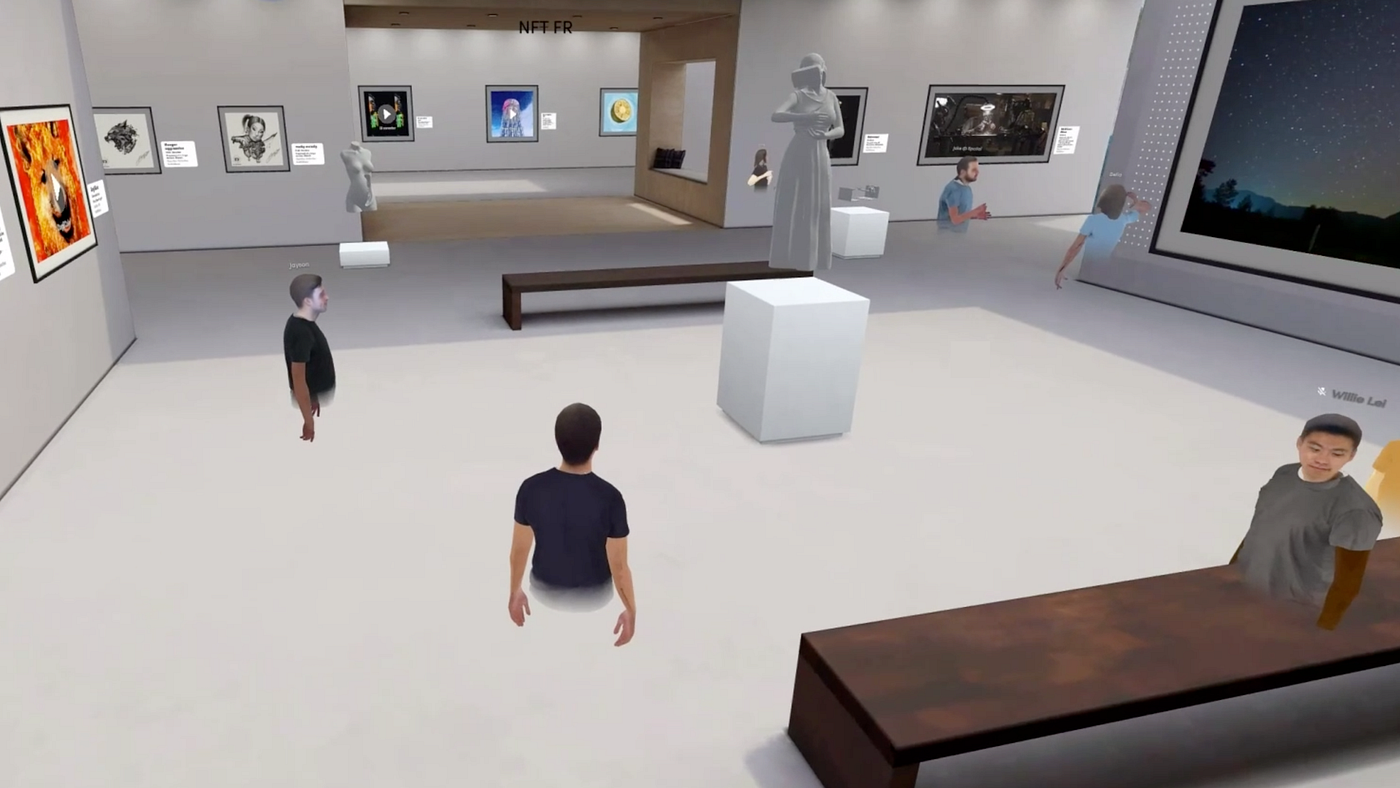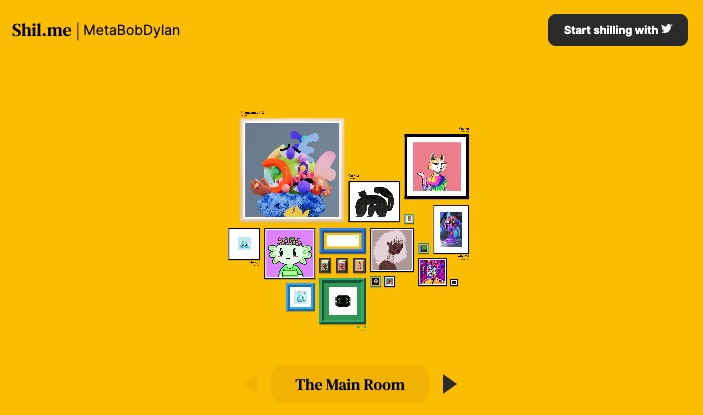Mapping out the NFT showcasing platforms landscape
People buy NFTs for various reasons. While many may go in hoping to flip the purchase for a quick buck, some are here for other incentives. They may be attracted by the artistic value of the project, the community the project has built, or even the utility the NFTs provide. With the various potential NFTs use cases in the future, flipping is probably the initial phase of the NFTs development only. As the ecosystem gets more mature, projects with true value will stay and fully utilise the characteristics of NFTs to create a new business and consumptions model.
Hence, one of the key questions is, what’s next after people buy the NFTs? What could you do with the things you have purchased and owned in the digital world? Currently, most of the user journey stops after people bought the NFTs from Opensea or other marketplaces. The NFTs you bought are probably just sitting on your wallet (or at most you are changing your Twitter PFP), as the NFT infrastructure is not fully developed for you to play around with it as much as the cryptocurrency you owned.
But after the purchase, many of us actually want to share or even showoff the NFTs with your friends or community. (we will discuss other use cases next time) You might have tweeted about the purchase, posted an IG story, or even opened an IG page to show your collections. But these may not be the most genuine medium for NFTs showcasing.
To tackle this, there are various startups working on solutions for you to showcase and share your NFTs collections.
--
NFT x Gallery

Comparisons across different NFT galleries
OnCyber
OnCyber is a platform that provides 3D & VR experiences to show your NFTs. By connecting your wallet with the platform, you can then choose a gallery that you like to use to show your NFTs. The gallery set-up process is relatively simple and intuitive, where you just have to choose the NFTs you want to include in the gallery to incorporate them. You can also browse the gallery set up by other users. The NFTs shown are also connected to Opensea for people to purchase easily.
The platform uses a freemium model where they offer galleries with minimal design and limited NFTs upload for users to use for free. For other environments that have different designs and can incorporate more NFTs, users would have to buy them via Opensea before integrating them as their showroom.

Example of an OnCyber gallery
Moon
Moon aims to become the all-in-one platform for NFTs across multiple blockchains (great for those of you that own NFTs across Ethereum, Polygon, Solana, etc.). What’s cool about them is that their platform is supplemented by a premium metal card, Moonpass, which allows users to show-off their NFT galleries with a simple tap to an NFC-enabled device. In the future, Moonpass is also expected to facilitate real world application of NFTs that have utility (i.e. ticketing, POAP, etc.).
The platform promises to be fully-loaded with features well-beyond a simple gallery showcase. This includes direct listing (think NFT trader), so that you can buy / sell your favourite NFTs without needing to go through a traditional market place, saving significant transaction fees; and an innovative “share-to-earn” mechanism, where users can earn their native tokens by having people visit their galleries — the tokens can then be staked for a share of platform revenue.
The platform is still under development but the team has quietly opened up a waitlist for their cards. For a limited time, the first 250 users that sign up to their waitlist will receive a free plastic NFC-card, be the first in line to buy the metal version when it becomes available, and receive an NFT airdrop when the platform goes live in early April.

Moon’s landing page
RareRooms
RareRooms is a 3D/VR enabled metaverse that allows collectors to curate and showcase their NFTs as well as allow brands to have amazing virtual storefronts and customizable spaces that allow their fans to truly experience their NFTs. As the room owner, you control what appears in the room, customizing the experience to your preference, the story you want to tell with your collection or quite simply, the stuff you want to show off. You can also discover other people’s collections and follow as they create new rooms and add new pieces of art to their RareRooms. They have also added a basketball shooting game for you to gamify your NFTs.
Spatial
Spatial was an early player in virtual reality workroom apps. Since the latest funding round in Dec 2021, the company is shifting its focus to become the metaverse for cultural events such as NFT exhibitions, brand experiences, and conferences. It started with focusing on collaborations with artists who want to show off their NFT projects. The latest iteration connects with cryptocurrency wallets and lets people see a catalog of the NFT art they own. They can then place the images into gallery spaces like virtual paintings, letting guests mill around and talk to each other with avatars or live videos that float above the avatars’ heads. Moreover, Spatial will let artists either sell NFTs directly through the platform or import 3D spaces and mint the actual spaces as NFTs, which they could then sell.
The company closed a US$25m fundraising round in Dec 2021. Investors include Pine Venture Partners, Maven Growth Partners, Korea Investment Partners, KB Investment, Mirae, Balaji Srinvasan, with participation from existing investors iNovia, Whitestar and Lerer Hippeau.

Virtual gallery on Spatial
Lazy.com
Lazy.com is the platform owned by billionaire entrepreneur Mark Cuban for people to show off their NFTs. Users can easily integrate their NFTs on Ethereum, Polygon and Solana into the platform and share them with the community in 2D format. You can also browse other people’s collections on the platform.
Shil.me
Shil.me is an easy, link-in-bio solution for displaying your NFTs. They are currently collaborating with an amazing NFT collection for holders of these collections to have exclusive access to Shil.me and its premium features.

Example room at Shil.me — Different layout the most of the competitors
Artiva
Artiva lets you build your own NFT platforms. They are more focused on artists and curators as the creators for them to build out their own galleries/collections. For artists, the platform helps them to collaborate and craft an experience around the artists’ artworks. While curators can use Artiva to quickly build a platform, onboard artists and collect platform fees.
NFT x Social
Showtime
Showtime is an NFT social network that aims to offer a familiar social media interface to the crypto community, enabling them to discover and share NFT art. It could be seen as the Instagram for NFTs. The company raised $7.6m from Paradign and DJ 3LAU in May 2021.
DSCAPE
While the project seems to be still at the development stage, DSCAPE is planning to sell limited “residence” NFT which has the utility where the owner could use it as a showcase for their NFTs on DSCAPE platform, especially on their mobile app. Each residence is unique and owner can invite their friend over to their residence to enjoy the things in the space together.
NFT x Metaverse
The Neighborhood
The Neighborhood wants to create a beautiful place where its inhabitants can have fun, engage with other residents and grow their own portfolio. It offers virtual homes as NFTs that allow you to take it with you to any other 3D world and well as bring your other NFTs to The Neighborhood. The first thing in the roadmap is adding the function that allows you to add and display your NFTs into your virtual home.
Highstreet
Highstreet is an open-world metaverse that incorporates shopping, gaming, NFTs, traditional and crypto brands in an MMORPG game. Users can play-to-earn by completing quests, attending social events, socializing with players, shopping for NFTs from real-world brands. Highstreet is created by LumiereVR, a computer vision based VR retail company established in 2015. The company has a good mix of the traditional and crypto investor base, including HTC, Palmdrive Capital, Cherubic Ventures from the traditional side, and Mechanism, Jump Trading, and NGC from crypto side.
Portals
Portals is a browser-based metaverse with a focus on a dense city center and zero-friction user experience. With easy drag-and-drop build tools and built-in communication features, the company makes it simple to customize immersive virtual spaces, which includes functions to integrate your NFTs into your room.
--
I am definitely missing out on some of the great platforms and solutions out there. Examples above are mostly focusing on the sharing and social elements of NFTs. Hence, how to bring in network effects into the platform, especially when NFTs adoption is still infant, is going to be one of the key differentiators for all these platforms when they scale up. Potentially some sort of tokenomics could be the way to go.
Another key differentiate point would be on the ways to bring and connect NFTs into the physical world. Although NFTs are all virtual, people still want to have channels to interact with the NFTs in the physical world. It could be in the format of merchandise, a gateway to share their NFTs, or even to use their NFTs in real life (i.e. ticketing, tokenised membership etc.), just to name a few. It is exciting to see how the virtual and physical worlds intertwine together through NFTs.